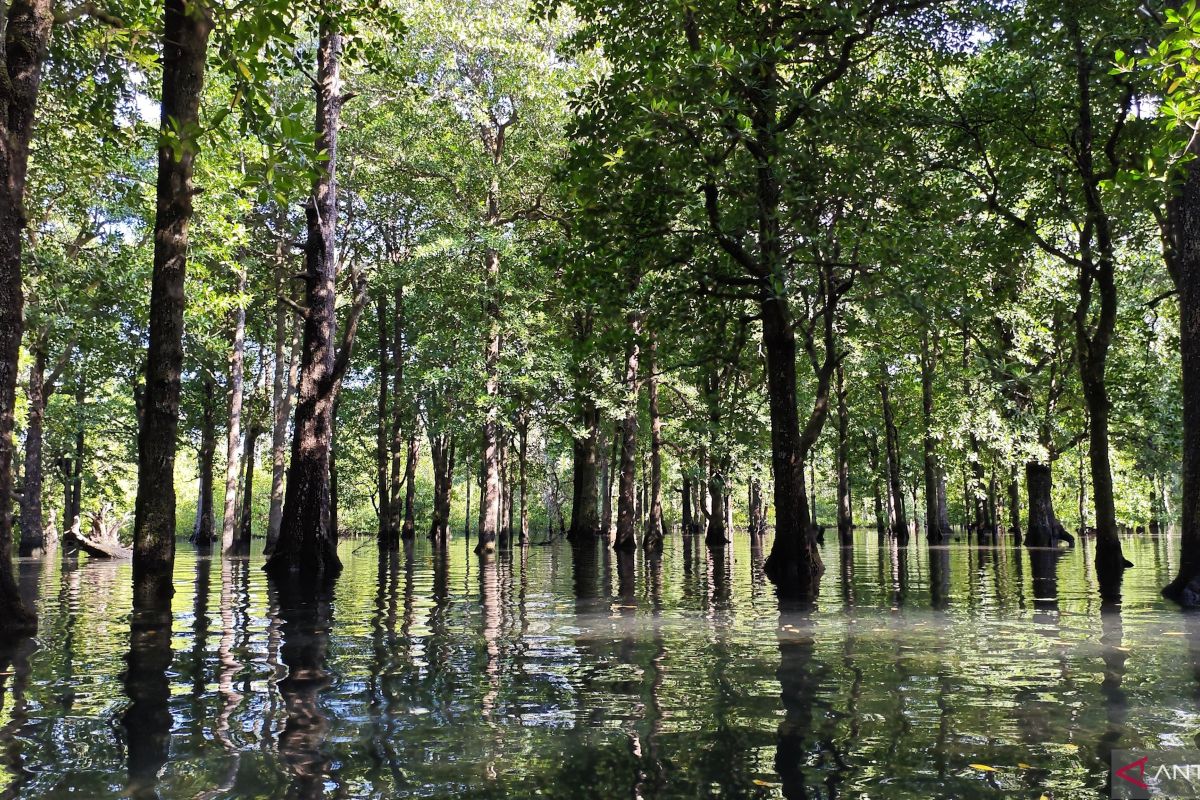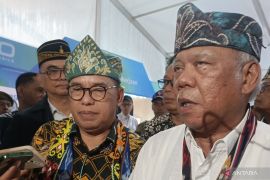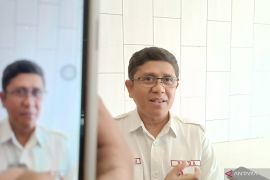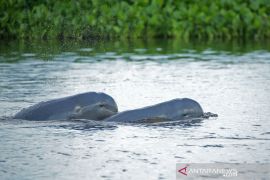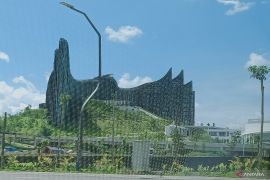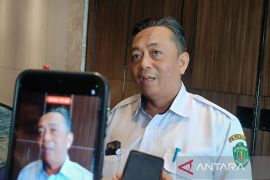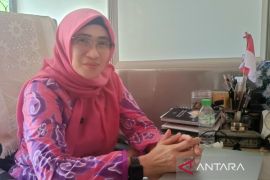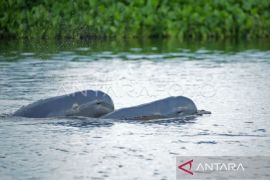To reach the area, visitors must travel overland from Tanjung Redeb, the capital of Berau District, a journey of approximately five to six hours by four-wheel drive.
Though the trip is quite long, any boredom would soon be forgotten as one is treated to panoramic views of lush tropical forests along the way. Upon arrival at Sulaiman Bay, the expansive coastal scenery provides a captivating backdrop.
Sulaiman Bay offers an array of natural attractions, including caves, lakes, estuaries, and the rich flora and fauna typical of tropical regions. To explore the area, visitors can rent a motorboat or a "ketinting" owned by local residents.
Locals also provide tour guides to explain observation points and share information about the biodiversity found at each site.
During the visit through the area, ANTARA had the opportunity to explore several natural tourist spots that offer extraordinary panoramas, including Salo Buaya, a mangrove forest area; Muara Sisipan, also known as Muara Penyu; and Sigending Besar Island.
The best times to explore the bay are in the morning or evening, especially on clear days when views are clearer and more captivating.
These times also increase the likelihood of spotting Sulaiman Bay's unique wildlife, such as turtles and the proboscis monkey, a species native to Kalimantan.
Salo Buaya
About a 20-minute journey from Sulaiman Bay's pier, visitors arrive at Salo Buaya. The area offers a stretch of mangrove forest and tropical ecosystem that creates a cool and refreshing atmosphere.
In the local language, "Salo Buaya" means crocodile river. However, its name does not reflect a frightening atmosphere. Instead, the river estuary, cutting through the dense mangrove forest, offers natural beauty that soothes the eyes and mind.
The river is narrow and winding, surrounded by towering mangrove walls. In some areas, branches and roots intertwine, forming a natural canopy that provides shade.
Along the way, visitors often encounter fish and turtles swimming in the crystal-clear water, where the riverbed is clearly visible from the boat.
The serene view is further enhanced by the sounds of rippling water, birdsong, and the wind rustling through the leaves. Salo Buaya is also a natural mangrove park with three main plant species: Rhizopora, Xylocarpus, and Bruguiera.
Uniquely, the Bruguiera species in the location grows close together and in clusters, different from other places where they generally grow scattered.
Muara Penyu
Not far from Salo Buaya is a turtle observation area known locally as Muara Sisipan, but more commonly Muara Penyu by tourists.
As the name suggests, the area is the natural habitat of two species of turtles found in Sulaiman Bay: the hawksbill turtle and the green turtle. The trip from Salo Buaya to Muara Penyu takes about 20 minutes by ketinting boat.
The clear water in the area allows visitors to easily observe the estuary floor and the variety of fish and turtles swimming around.
At low tide, visitors can even spot proboscis monkeys active in the trees or swimming around the estuary. The scenery of Muara Penyu is further enhanced by the lush tropical forest surrounding the area.
According to local guides, the types of wildlife observed depend heavily on the tides. At high tide, turtles can be seen swimming and foraging. At low tide, proboscis monkeys and long-tailed macaques usually appear in the surrounding area.
Sigending Besar Island
The next destination to explore in Sulaiman Bay is the Sigending Besar Island, a conservation and ecotourism area boasting extraordinary underwater biodiversity, which only takes about 17 minutes from Muara Penyu to reach the island, one of the area's best snorkeling spots.
Sigending Island is renowned for its coral reef ecosystem, considered the best in Berau District.
Research conducted by conservation organizations such as The Nature Conservancy (TNC) shows that the area is an ideal habitat for various species of reef fish, including parrotfish, which play a vital role in maintaining coral health by eating algae covering the coral surface.
The seawater around the island is crystal clear, providing high visibility for snorkeling. Visitors can enjoy views of colorful coral reefs, various species of tropical fish, and other marine life.
The name "Sigending" has several origin stories. Some say it comes from the island's shape, which resembles a pitcher.
Another explanation from the local Dayak language states that the word "Sigending" means estuary, referring to its geographical location at the confluence of sea and land.
The island and its surrounding waters, covering an area of approximately 1,500 hectares, have been designated a protected and ecotourism area by the Berau District Government through District Head's Decree No. 474 of 2016.
The status was granted to protect the existing biodiversity and encourage the development of sustainable, conservation-based tourism.
Mangrove tourism destination managers in Sulaiman Bay have their own approach to maintaining the sustainability of the area's ecosystem.
The Sulaiman Bay Nature Conservation Forum (Forlika), one of the parties managing the Sigending mangrove tourism area, implements a queuing system to limit large tourist crowds visiting that could cause environmental damage through litter and noise that disturbs the wildlife.
Mangrove and marine tourism in Sulaiman Bay uses "kelotok" boats to travel between observation points. The management recommends turning off boat engines while at observation points to avoid disturbing wildlife.
Ecotourism development in Berau District illustrates that tourism is not only about attracting tourists but also about taking responsibility for nature and the sustainability of ecosystems.
Related news: West Kalimantan pushes joint action to save mangrove forests
Related news: Ministry vows mangrove rehabilitation across 769,824 hectares
Related news: Indonesia's M4CR project advances global ecosystem restoration
Translator: Farhan Arda Nugraha, Cindy Frishanti Octavia
Editor: Azis Kurmala
Copyright © ANTARA 2025
